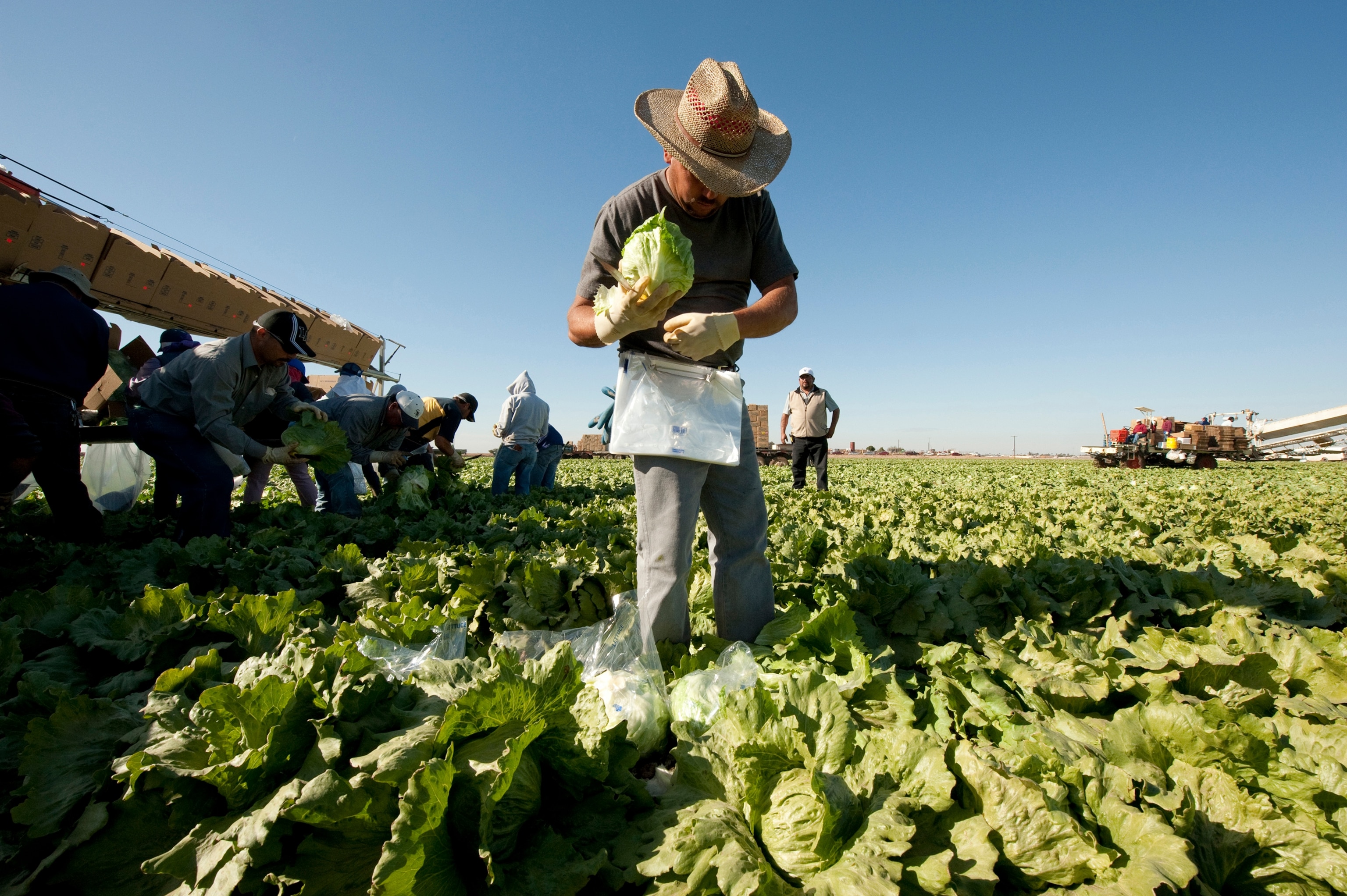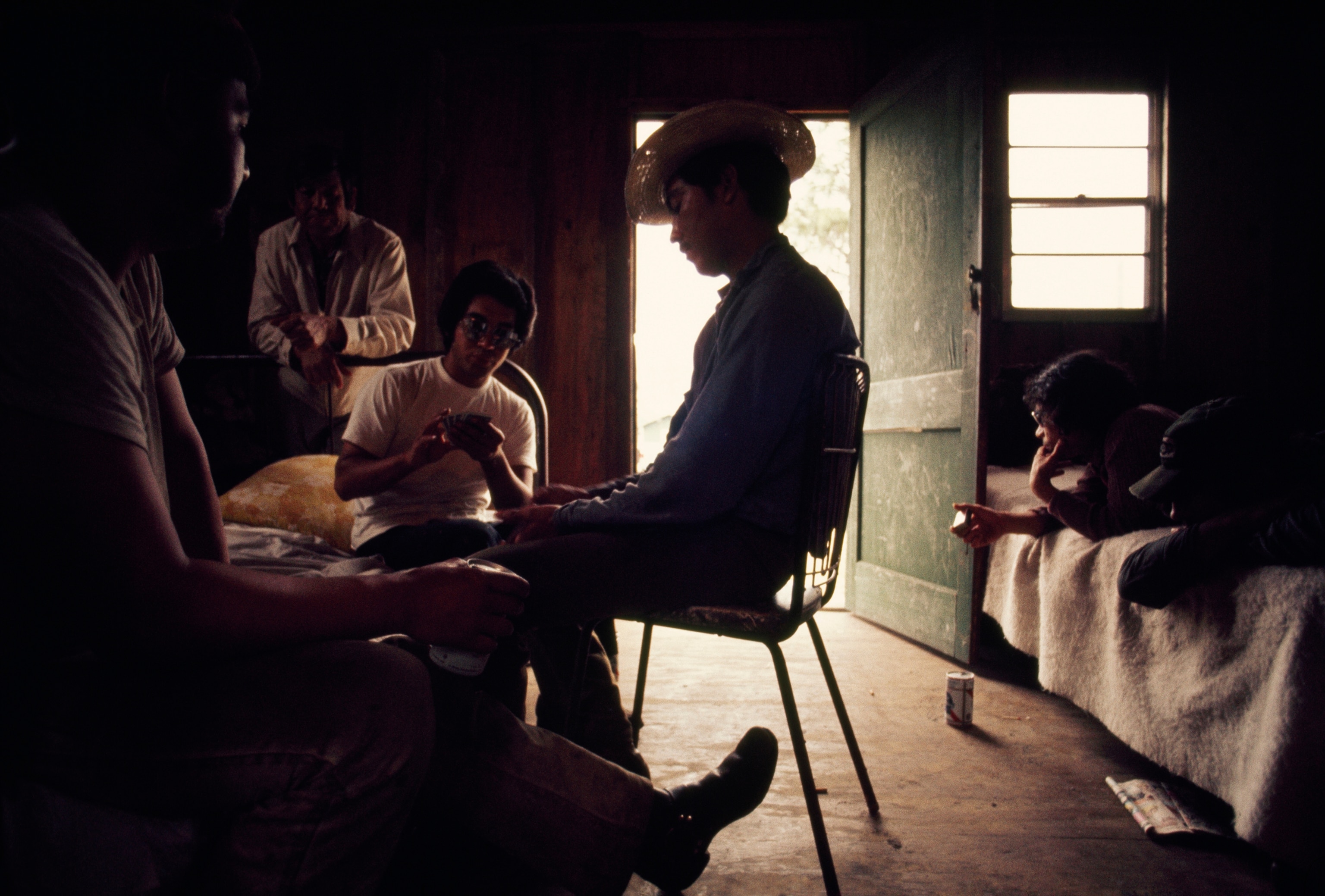
How To Update ‘Harvest of Shame’ for the 21st Century
On the day after Thanksgiving in 1960, Americans met a mother who couldn’t afford milk for her nine children. They met a family of six who were sleeping in the woods, $1.45 to their name, traveling miles looking for work.
They met men, women, and children who were trucked across the southeastern United States in open, unregulated truckbeds—conditions often worse than those afforded to cattle. These people, Edward R. Murrow told the audience of his CBS documentary Harvest of Shame, were “the people who harvest the food for the best-fed nation in the world.”
“We used to own our slaves,” Murrow says, quoting a farmer. “Now we just rent them.”
Never before had the conditions of farmworkers been so deeply and widely reported. Murrow closed Harvest of Shame with a call for an angry public to push for legislation that could help the migrants, who had no lobby or voice in Washington.
This year, to mark the 55th anniversary of Harvest of Shame (which is worth watching in full below if you haven’t seen it, or re-watching if you have), we asked food-minded writers, researchers, and thinkers what they would do if, like Murrow, they had one hour to tell millions of Americans about a hidden issue with the food system, in hopes of spurring action.
Some Good News for Migrants
Harvest of Shame wasn’t the last word on migrant workers in food. Barry Estabrook’s 2009 article in Gourmet on the plight of primarily Hispanic tomato pickers grew into the book Tomatoland, which covered the same topic.
“It was certainly the worst corner of the agricultural workforce,” Estabrook says, echoing Murrow. “There was nobody wanting to leave another job to become a tomato picker. It was the bottom of the bottom. These people are totally disenfranchised. Most of them don’t have proper documentation. They don’t vote. They don’t make political contributions. They have no power.”

But there’s been progress for tomato pickers since Estabrook’s book. The Coalition of Immokalee Workers recently secured an agreement with several major tomato buyers to pay higher prices for the fruit, with extra money going back to the pickers.
“They’ve created a template you can put on any agricultural model,” Estabrook says. “A guy fresh in from wherever steps onto a tomato field and immediately there’s a legal network that connects him to the chairman of Wal-Mart.”
If he had an hour to talk to Americans after Thanksgiving, Estabrook says he’d explain this agreement and make the case for expanding it to other crops and industries.
The U.S. Department of Agriculture estimates there are just over a million migrant farmworkers in the United States.
Sweet Potatoes, Not Sweet Potato Fries
In 1960, Murrow profiled the people caught in the gears of the nascent industrial food system. That machine has since become more efficient (though migrant labor persists), and has brought us an overabundance of cheap calories—cheap calories that are packed into sweet drinks and carb-stuffed snacks. This is what Blue Zones author, longevity researcher and National Geographic explorer Dan Buettner would focus on if he could make a new Harvest of Shame.
“I would open with the fact that in the beginning of the 20th century, Americans spent 50 cents of every dollar they made on food. Today, on average, we only spend eight [cents],” he says. “I would talk about the dangerous and increasing access to fast food. I think that’s probably the number one contributor to obesity. My colleagues at the University of Minnesota says the average American lives within a mile of seven fast food restaurants.”
Buettner hopes viewers would finish watching his Harvest of Shame ready to push for an end to the government programs that make unhealthy calories so cheap. “We need to take some of the two trillion dollar a year budget we spend on healthcare and shift it to making healthier calories more accessible,” he says.
Buettner has some suggestions for home cooks who want to be a little better for their guests’ health on Thanksgiving:
“One way to make the meal healthier without touching the ingredients is, bring out your sweet potatoes [a favorite of long-living Okinawans Buettner has profiled] and vegetables first and have people when they’re starving pounce on that. Bring out the turkey and the less healthy ingredients second. Finally, bring out desserts and try bringing out small individual desserts,” he says.
“Who Will Grow Our Food?”
Aside from the progress of tomato pickers, Estabrook says the only thing that had changed since Harvest of Shame is the color of the workers’ skin, “from black to brown.”

And that color line is still seen plainly across the agriculture industry, even on small family farms.
“The average age of the farmer is around 58 years old. For black farmers, it’s 63,” says Natasha Bowens, the author of The Color of Food, a book and multimedia project that tells the stories of “Black, Native, Asian, and Latina farmers and food activists” across the United States.
The age discrepancy between races shows a larger issue with small farms. “Our population of farmers is aging out and not enough young people are picking up the pitchfork to take their place,” Bowens says.
“Black farmers are losing land at three times the rate of white farmers. In 1920, black farms had 16 million acres of land and were one million strong, today there are only 34,000 black farms in the country.”
With small farms fading away, that leaves more responsibility and farmland to the massive industrial farms. If given an opportunity like Murrow had, Bowens says she would “talk to Americans about the people behind their food.”
“I’d love to see people connecting the food on the store shelves and on their plates to the farmers and developing a real understanding of what it takes to feed this country and to run a farm.”
Who Can Afford to Eat What We Farm?
Eight years after Harvest of Shame, CBS aired Hunger in America. With similar force, the documentary revealed just how severe and widespread undernourishment was.
“What I cannot get over is the reaction to it,” says Marion Nestle, a New York University professor of nutritional sciences and author of several books on food and food politics. “Congress immediately started passing legislation and the country was really ready to try to do something about these people in Appalachia who look like they were in developing countries.”

But this interest in hunger was short-lived. As activist and author Joel Berg pointed out in 2008, the media “coverage [of hunger] surged in 1969, when Congress held a major hunger hearing and President Nixon sponsored a hunger conference, and then plummeted to virtually nothing in most of the years since. Out of the 77 network news stories over this 37-year time period, 25 were in 1969 and 13 were in 1983 and 10 were in 1984 (two years in which there were major controversies over Reagan hunger policies).”
“I think Americans are so inured to this it wouldn’t make any difference,” Nestle says. “When Hunger in America came out in 1968 it shocked the nation. I can’t imagine that happening now. Americans have gotten richer and there’s less sympathy for those who aren’t.”
But hunger hasn’t gone away. And now more than ever, the cheapest calories are some of the most unhealthy. While nearly 15 percent of Americans—more than 48 million people—are food insecure, the CDC puts the national obesity rate at more than one third of the U.S. population, 78.6 million people. Nestle says that in her hour with the American public, she would show how a poor family makes spending decisions.
“I don’t think anybody who is not poor has a clue. They don’t understand what it’s like to not be able to buy the kind of food you would like to,” she says. “If you do buy expensive food, that means you’re giving up something you need to get through your life on a daily basis. They don’t have any concept of how, if you’re working two or three jobs to make ends meet, you don’t have time to shop, you don’t have time to cook. You just want the most caloric thing you can find and you’re happy ot have that.”
And what would a poor family be having on Thanksgiving? “They’re certainly not buying a big turkey and roasting it in an oven,” Nestle says. Some families might get dishes from a food pantry. Others might go to a shelter.
“Maybe they’re going to McDonald’s,” Nestle adds.
When Nestle said that, I remembered the sign I saw the night before on my bus ride home. The McDonald’s down the block will be open this Thursday.







